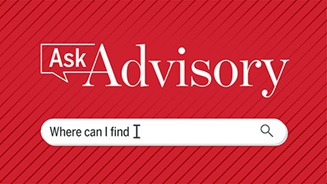Almost 50% of clinicians in the United States reported feeling burnt out over the last three years, with several factors, including chaotic work environments and poor teamwork, contributing to feelings of burnout, according to a new study published in JAMA Health Forum.
Study details and key findings
For the study, researchers sent surveys to physicians and advanced practice clinicians at 120 large U.S. health care organizations between February 2019 and December 2021. In total, 20,627 clinicians responded to the survey. Among the respondents, 67% were physicians, 51% were female, and 66% were white.
Overall, burnout rates among clinicians during the three-year study period was 49%. In 2019, around 45% of clinicians reported feeling burnt out, which slightly decreased in early 2020 before increasing to 50% toward the end of the year. In 2021, rates of burnout generally worsened, reaching the highest levels ever recorded by the fourth quarter at roughly 60%.
When assessing factors associated with burnout, the researchers found that high chaos, a lack of work control, and excessive home EHR use all contributed to clinicians' feelings of burnout.
For example, 78% of clinicians working in chaotic environments reported feeling burnt out compared to 36% of those working in calmer environments. Similarly, 75% of clinicians who felt a lack of control at work reported burnout compared to 39% who said they had good control.
In comparison, factors that helped mitigate feelings of burnout include feeling valued, good teamwork, and having values aligned with organizational leadership.
Only 37% of clinicians who felt valued reported feeling burnt out compared to 69% of those who did not feel valued. Similarly, only 42% of those who had good teamwork said they experienced burnout compared to 88% of those with poor teamwork.
As burnout increased and satisfaction decreased among physicians, so did intent to leave, growing from 24% in 2019 to more than 40% in 2021.
What can be done to mitigate physician burnout?
In May, U.S. Surgeon General Vivek Murthy released an advisory warning that burnout among health care workers has reached "crisis levels." As workers continue to struggle with burnout, estimates project that there will be a shortage of 3 million low-wage health care workers in the next five years and almost 140,000 fewer physicians by 2033.
To mitigate burnout among clinicians, the study's authors offer several recommendations, including:
- Understanding and managing clinicians' work pace
- Adjusting clinicians' workloads by giving them more control over their schedules
- Having a receptive leadership team who makes tangible changes according to feedback
- Providing support to improve work-life balance
- Providing clinicians self-care opportunities
- Ensuring there is a positive team culture and efficient team-based care workflows
Currently, HHS plans to distribute $103 million in funds over three years to 45 grantees to address burnout and improve health care worker retention. These funds will also help promote mental health and wellness and support trainings for those in underserved and rural communities.
Overall, addressing issues of burnout could lead to considering cost savings for health care organizations since burnout-related physician turnover is estimated to cost roughly $5 billion a year. (Lagasse, Healthcare Finance, 11/28; Linzer et al., JAMA Health Forum, 11/23)
Don't miss out on the latest Advisory Board insights
Create your free account to access 1 resource, including the latest research and webinars.
Want access without creating an account?
You have 1 free members-only resource remaining this month.
1 free members-only resources remaining
1 free members-only resources remaining
You've reached your limit of free insights
Become a member to access all of Advisory Board's resources, events, and experts
Never miss out on the latest innovative health care content tailored to you.
Benefits include:
You've reached your limit of free insights
Become a member to access all of Advisory Board's resources, events, and experts
Never miss out on the latest innovative health care content tailored to you.
Benefits include:
This content is available through your Curated Research partnership with Advisory Board. Click on ‘view this resource’ to read the full piece
Email ask@advisory.com to learn more
Click on ‘Become a Member’ to learn about the benefits of a Full-Access partnership with Advisory Board
Never miss out on the latest innovative health care content tailored to you.

